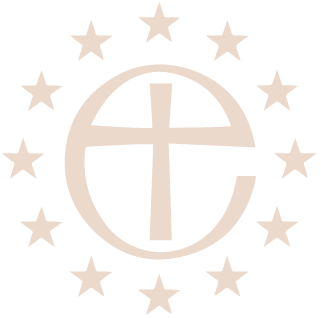
Lent 1, 10 March 2019 (Lent Series on the Liturgy – 1 The Sacrament of Gathering)
Revd. Canon Leonard Doolan
Over the next few weeks I will be offering 5 sermons based on the Liturgy – that weekly offering of the church in which so much of God’s glory in Christ, and in us, is celebrated.
Each week the subject will be preceded by the word ‘sacrament’. I am using this word in its loosest sense because I do not want to confuse what we are doing with the 7 formally recognized Sacraments of the church.
However I am working with the basic meaning of ‘sacrament’, namely ‘the outward visible sign of a hidden invisible grace’. In other words, a mystery revealed.
Today we start at the beginning – a very good place to start – by thinking of the Sacrament of Gathering, as it is when we are gathered together we begin our worship.
When we gather together we are the church of God. The New Testament word for this is ekklesia – normally translated as ‘church’. The Greek speakers here will know that this word comes from the Greek verb ‘to call’ or ‘to invite’.
The New Testament has a number of descriptions or metaphors for the church, mostly provided in the Letters of Paul, but also in other bits of NT literature. We should note, however, that this word ‘ekklesia’ is not a word found frequently in the four gospels. Indeed Our Lord uses it only once – when he tells the Apostle Peter that he will be the foundation, the Rock.
Although ‘ekklesia’ occurs in the rest of NT literature, it is never used as a word to describe a church building. So when we use the word ‘church’ we are describing those who are ‘called out’ by God, not a building.
A number of images are used to describe the ekklesia, the church of Christ. Sometimes it is referred to as a body – a metaphor of a living co-ordinated organism. Sometimes it is referred to in the imagery of a family, sometimes as the ‘bride of Christ’, and others, but never a church building. In Western Christianity we have confused the building and the people by using the same word for both. In the Eastern tradition the distinction is retained – the building is referred to as a holy temple; the word ‘church’ is used only of the faithful people.
Another image used, is one that I favour – the image of the household. For this, the Greek word is oikia, and again the Greek speakers here will know many other words derived from this – like the little family homes in the cemetery, or the block of apartments. Even the word ‘ecumenical’ is a derivative.
Before there were any Christian ‘holy temples’ the household of households would gather in a believers home, an oikia. Oikia in the NT is not a building though, but a metaphor. The household is the people, or the family of believers. Christ’s church is made up of families of believers. In English we have the word ‘parish’ which is a shortened form of the word paroikia and is translated more literally as ‘parochial’. So the Church of Christ is a common household of households ‘called out’ to gather as the visible body of the invisible God – the Word that has become flesh.
So we gather here today in a different context. The household of the faithful are called into one place, a gathering or congregation, in order to offer God worship and praise, which is ‘meet and right’ and which is our duty and our joy. A former bishop of mine always said that God does need a building to live in, but he does need somewhere to show his hospitality.
So it is as we gather as a household of households – the baptized people of God – to share in the hospitality of God, with a focus of a table, the recalling of Christ’s supper, and the sharing of bread and wine. Of course there is more to this – it is about the offering of our whole selves, our work, and our all our earthly efforts. The word we use for this total offering is Liturgy.
The Gathering of priest and people is the expression of our common life. The ‘outward visible sign’. This is not just our life together as the baptized, but also our common life together in the Holy Trinity, Father, Son, and Holy Spirit. The Greeting that commences our Liturgy is the beginning of the liturgical conversation that continues throughout the Liturgy –priest and people in conversation between each other, but directed to God.
Within God’s chosen, or ‘called’ people, there are a variety of different gifts and ministries. From the earliest of times, from the era of the Apostles, the Church of God has had pastoral oversight from bishops, episkopoi, and the Acts of the Apostles, tells us of the appointing of the first diakonoi or deacons in the church, but also there is an emerging eldership or prebyterate, priesthood, whose primary task was in sharing the service of leadership of the bishop. There has been, from the first times, an order of ministry that presided over the worship of the church. So priest and people greet each other.
One of the insights of God’s people is the acknowledgement that we are a fallen race – from the time of the first sin of Adam, and so when the assembly of believers meet together and greet together, we move immediately to a common act of repentance – of acknowledging, rather like that great vision of Isaiah that we heard a couple of Sunday’s ago, that we are an unclean people of unclean lips, and we all have the need for the burning charcoals of forgiveness.
God has an endless supply of forgiveness, if only we had an endless supply of repentance in our hearts. If only we could see ourselves as others see us, and as God sees us.
Confession and forgiveness is placed at the start of worship. Either in a longer form of confession, or using the ancient Kyrie Eleison in Greek or in English we seek and pray for forgiveness. Interestingly it is the Kyrie Eleison that is the only part of the Greek liturgy that transferred into the Latin Western Mass, and so occurs in our Anglican Liturgy nowadays.
Having been forgiven we are given leave, freedom, to sing or say ‘Glory to God in the highest’. The traditional text for the Gloria is ancient, though no exact dating can be given for its composition. In it we lift our hearts to God, reflecting the message of the angels in heaven when they announced the birth of Christ to the shepherds in their fields. The great Archbishop and theologian, Dr. Michael Ramsey, famously said that one word sums up God in his completeness – and that word is ‘glory’ (doxa). All worship, indeed all our lives, should be doxological – ‘glory giving’ to God.
Our Christian worship revolves around the two great mysteries in Christ, namely Christmas and Easter, his birth, and his death and resurrection. So our worship is formed ‘seasonally’ to reflect different Christo-centric seasons, which reflect different moods and atmospheres. For this reason it is customary to omit the Gloria in the holy season of Advent and of Lent, so that we have a great burst of ‘doxology’ when Christ is born, and when he is raised from the dead.
This is how the church gathers – the household of faith. We greet, we confess, and we give glory. This is the setting for the rest of our worship, the first step in our Liturgy, our offering to God.
We are then ready to settle, and to listen to the holy scriptures, to recite our Creed, and to pray in the power of the Spirit, in union with Christ, to God our Father. This we will consider in the Sacrament of Scripture, next Sunday.


No Comments